Mold Library
We pride ourselves on educating our customers. One thing that we can’t stress enough is that not all molds are created equal. There are wet molds and dry molds, there are some that produce mycotoxins, and they come in a million shapes, colors, and sizes!
We have created this library/database of the most common species of mold that we see in the Samples that come from our 3rd-Party Lab.
Feel free to reach out to us here or give us a ring at any of our locations, if you have any questions or concerns about spore types you see.
We are always here for you!
Sourced from Fungal Library, www.eurofinsus.com, Eurofins USA. Web. 21 October 2021. Retrieved from https://www.eurofinsus.com/environment-testing/built-environment/resources/fungal-library
Acremonium
Allergens & Potential Toxic Production
- Allergens- Type I allergies (hay fever, asthma). Type III hypersensitivity pneumonitis: Humidifier lung.
- Toxic production- None other than cephalosporin.
Outdoor & Indoor Growth
- Found in soil, dead organic debris, hay, food stuffs.
- Widespread. Requires very wet conditions.
Characteristics
- Grows well on all general fungal media. Small white or pale shades of pink, salmon colonies. Membranous or thinly.
Potential Opportunist & Pathogen
- Mycetoma, keratitis, onychomycosis. Other rare infections reported in immunodeficient patients, and in persons with wound injuries.
Alternaria
Allergens & Potential Toxic Production
- Type I allergies- Hay fever and asthma.
- Type III hypersensitivity pneumonitis: Woodworker’s lung, Apple store hypersensitivity. May cross react with Ulocladium, Stemphylium, Phoma, others.
- Toxic production- A. alternata produces the antifungal alternariol.
Outdoor & Indoor Growth
- Found in soil, dead organic debris, on food stuffs and textiles. Plant pathogen, most commonly on weakened plants.
- On a variety of substrates.
Characteristics
- Grows well on general fungal media. Colonies are dark olive green to brown, floccose to velvety (heavy sporulating). Colonies become pleomorphic over time, and lose the ability to sporulate with subsequent transfer.
Potential Opportunist & Pathogen
- Nasal lesions, subcutaneous lesions, nail infections; the majority of infections reported from persons with underlying disease or in those taking immunosuppressive drugs.
Arthrinium
Allergens & Potential Toxic Production
- One species, Arthrinium sphaerospermum, reported as an allergen.
- Toxic production- Not known.
Outdoor & Indoor Growth
- Found in soil, decomposing plant material.
- Arthrinium is cellulolytic, but it is rarely reported.
Characteristics
- Grows well on general fungal media. White, floccose, spreading. Develops brown to black spore clusters with time.
Potential Opportunist & Pathogen
- Not known.
Aspergillus
Allergens & Potential Toxic Production
- Type I allergies- Hay fever and asthma.
- Type III allergies- Hypersensitivity pneumonitis: Humidifier lung, Malt worker’s lung, Compost lung, Wood trimmer’s disease, Straw
- Toxic production- Partial list: A. flavus: aflatoxin B1 & B2, cyclopiazonic acid, kojic acid. A. fumigatus: ergot alkaloids, fumigaclavines, gliotoxin, fumigatoxin, fumigillin, fumitremorgens, helvolic acid, tryptoquivaline tremorgens, verruculogen. A. niger: malformin C, oxalic acid. A. ustus: austocystins. A. versicolor: aspercolorin, averufin, cyclopiazonic acid, sterigmatocystin, versicolorin.
Outdoor & Indoor Growth
- Found in soil, decaying plant debris, compost piles, stored grain.
- On a wide range of substrates. Water requirements range widely.
Characteristics
- Aspergillus species grow well on general fungal media. Some xerophilic species prefer dryer conditions.
.
Potential Opportunist & Pathogen
- Respiratory, invasive, cutaneous, ear, and corneal disease. Severe, invasive disease is usually associated with immunosuppressed hosts.
Ascospores
Allergens & Potential Toxic Production
- Allergen- Highly variable, dependent on genus and species. Poorly studied.
- Toxic production- Very many, dependant on genus and species.
Outdoor & Indoor Growth
- Found in everywhere in nature. Saprophytes and plant pathogens.
- The cellulolytic ascomycetes Chaetomium and Ascotricha are frequently found growing indoors on damp substrates.
Characteristics
- While some ascomycetes sporulate in culture (Chaetomium, Pleospora), many are parasitic plant pathogens, and sporulate (grow) only on living host plants.
Potential Opportunist & Pathogen
- Dependent on genus and species, but the vast majority do not cause disease.
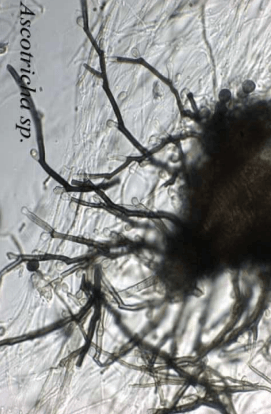
Ascotricha
Allergens & Potential Toxic Production
- Allergens- Unknown
- Toxic production- Unknown
Outdoor & Indoor Growth
- Ascotricha is cellulolytic, and sources of isolation include damp sheet-rock paper, woody and straw material.
Characteristics
- Spores are round, brown, and may be identified to genus if other structural elements are present.
Potential Opportunist & Pathogen
- Not known
Allergens & Potential Toxic Production
- Type I allergies- Hay fever and asthma.
- Type III- Hypersensitivity, pneumonitis: Humidifier fever, Sauna taker’s lung.
- Toxic production- Not known.
Outdoor & Indoor Growth
- Found in soil, forest soils, fresh water, aerial portion of plants, fruit, marine estuary sediments.
- Widespread, where moisture accumulates, especially bathrooms and kitchens, on shower curtains, tile grout, window sills, textiles, liquid waste materials.
Characteristics
- Grows well on general fungal media. Yeast-like, beginning cream to pink, becoming dark brown with age.
Potential Opportunist & Pathogen
- Rare reports of isolates from skin lesions, keratitis, spleen abscess in lymphoma patient, blood isolate from leukemic.
Allergens & Potential Toxic Production
- Type I allergies- Hay fever and asthma.
- Type III- Hypersensitivity pneumonitis: Lycoperdonosis (puffball spores), Mushroom culture hypersensitivity.
- Toxic production- Mushroom Toxicosis (poisoning) is usually a result of ingestion of the following toxins: Amanitins, monomethyl-hydrazine, muscarine, ibotenic acid, psilocybin.
Outdoor & Indoor Growth
- Found in Saprophytes and plant pathogens. Gardens, forests, woodlands.
- Serpula lacrimans, the agent of “dry rot,” and other fungi causing white and brown wood rot, grow and destroy the structural wood of buildings. Poria incrassata causes a particularly destructive dry rot in buildings.
Characteristics
- Most Basidiomycetes will not fruit on laboratory media. Many will form arthrospores or sterile mycelia on laboratory media.
Potential Opportunist & Pathogen
- Asexual forms may cause rare opportunistic infections. The yeast Cryptococcus neoformans is a basidiomycete.
Beauveria
Allergens & Potential Toxic Production
Allergens- Type I allergies (hay fever, asthma).
Toxic production- Not known.
Outdoor & Indoor Growth
- Commonly found in soil, plant debris, dung and parasite of insects.
- Indoor growth is infrequent.
Characteristics
- Grows well on general fungal medium, forming small, mounded, delicate colonies.
Potential Opportunist & Pathogen
- Rare isolations from corneal lesions, and lungs from an immunocompromised patient.
Bipolaris/Drechslera Group
Allergens & Potential Toxic Production
- Common. Type I allergies (hay fever, asthma). Most commonly reported cause of allergic fungal sinusitis.
- Toxic production- Not known.
Outdoor & Indoor Growth
- Found in plant debris, soil. Plant pathogens of numerous plants, particularly grasses.
- Indoor- On a variety of substrates.
Characteristics
- Grows well on general fungal media although many isolates need “light/dark cycling” for sporulation. Colonies are shades of dark gray to brown.
Potential Opportunist & Pathogen
- Occasionally a cause of phaeohyphomycosis, including keratitis, sinusitis, and osteomyelitis. These infections most often occur in immunocompromised persons, although infections also occur in normal hosts. One case of brain abscess reported in an immunocompromised patient.
Botrytis
Allergens & Potential Toxic Production
- Type I allergies (hay fever, asthma). Type III hypersensitivity pneumonitis: Winegrower’s.
- Toxic production- None known.
Outdoor & Indoor Growth
- Found in soil, stored and transported fruit and vegetables. Plant pathogen and saprophyte on flowers, leaves, stems fruit. Leaf rot on grapes strawberries, lettuce, cabbage, onions.
- May be found in conjunction with indoor plants.
Characteristics
- Grows well on all general fungal media. Colony spreads easily over the surface of the petri dish. May form black sclerotia.
Potential Opportunist & Pathogen
- Very rare agent of keratomycosis. No recorded human cases of infection
Ceratocystis/Ophiostoma
Allergens & Potential Toxic Production
- Allergens- Not studied. Person most likely to be affected would be lumber-yard workers or carpenters.
- Toxic production- None listed.
Outdoor & Indoor Growth
- Commonly found in commercial lumber, tree and plant pathogen.
- Most homes built with lumber have areas of growth on wood framing inside walls.
Characteristics
- Some species may grow on specialized laboratory media. Asexual forms grow on general fungal media.
Potential Opportunist & Pathogen
- Not reported to infect humans or animals. A connection between Ophiostoma and the human pathogen Sporothrix schenckii has been proposed but not confirmed.
Cercospora
Allergens & Potential Toxic Production
- Allergens- Not studied.
- Toxic production- Unknown
Outdoor & Indoor Growth
- Found in higher plants, causing leaf spot.
- Indoor growth not seen.
Characteristics
- Does not grow on laboratory media since it is not wholly saprophytic. Commonly found as parasites on higher plants.
Potential Opportunist & Pathogen
- One report of human infection in Indonesia, 1957.
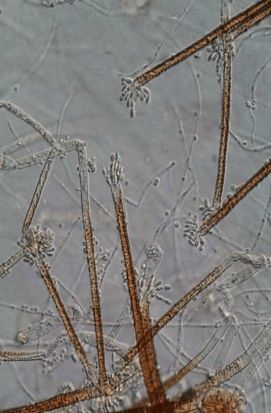
Cephaloascus
Allergens & Potential Toxic Production
- Allergens- Not known.
- Toxic production- Unknown
Outdoor & Indoor Growth
Natural habitat includes wood, insects, and fruit.
Characteristics
- Spores do not have distinctive morphology and would be categorized as “other colorless” on spore trap samples.
Potential Opportunist & Pathogen
- Unknown
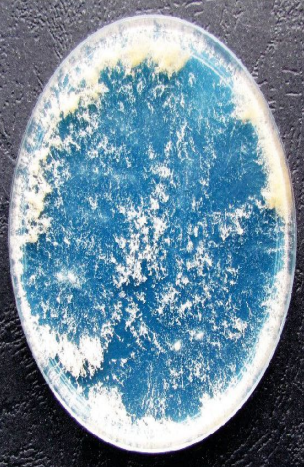
Published in Bulletin of University of Agricultural Sciences and Veterinary Medicine Cluj-Napoca. Veterinary Medicine 2018. https://www.semanticscholar.org/paper/Chrysonilia-sitophila%3A-Growth-on-Different-Cult ure-Răpuntean-Tălmaciu/24a1c1c47d4b050a88cfa0a22c655f8c91385d0f/figure/1
Chrysonilia
Allergens & Potential Toxic Production
- Allergens- Unknown
- Toxic production- Unknown
Outdoor & Indoor Growth
- Chysonilia sitophilia commonly grows on sterilized soil in greenhouse as well as bread.
Characteristics
- The airborne phase (teliospores) of smut requires a living host for growth and will not develop on laboratory media. The yeast phase (basidiospores) is saprophytic and will grow on general fungal media.
Potential Opportunist & Pathogen
- Spores are a form of arthrospore but are large, variable in size, and distinctive.
Chaetomium
Allergens & Potential Toxic Production
- Type I allergies- Not well studied. Hay fever and asthma.
- Toxic production- Chaetomin. Chaetomium globosum produces chaetoglobosins. Sterigmatocystin is produced by rare species. Other compounds produced (which may not be mycotoxins in the strict sense) include a variety of mutagens.
Outdoor & Indoor Growth
- Found in soil, seeds, cellulose substrates, dung, woody and straw materials.
- Widespread, cellulolytic, very commonly found on damp sheetrock paper.
Characteristics
- Grows and sporulates on general fungal media, may need 8-20 days for fruiting body production and sporulation.
Potential Opportunist & Pathogen
- Uncommon agent of onychomycosis (nail infection).
Cladosporium
Allergens & Potential Toxic Production
- Type I allergies- Hay fever and asthma.
- Type III- Hypersensitivity, pneumonitis: Hot tub lung, Moldy wall hypersensitivity.
- Toxic production- Cladosporin, emodin. (Neither are highly toxic).
Outdoor & Indoor Growth
- Found in soil of many different types, plant litter, plant pathogen, leaf surfaces, old or decayed plants.
- Widespread, on many substrates, including textiles, wood, moist window sills and is associated with refrigerated foods.
Characteristics
- Grows on all general fungal media. Some species sporulate better than others, and some may need cycles of light in order to produce spores.
Potential Opportunist & Pathogen
- Generally, non-pathogenic. One species, Cladosporium carrionii, is an agent of chromoblastomycosis in subtropical and tropical regions.
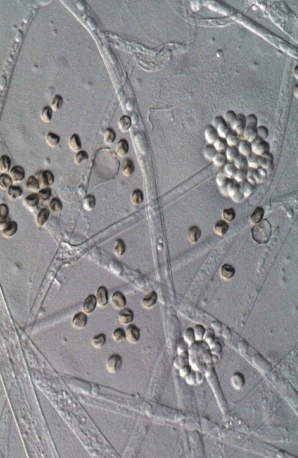
Cunninghamella
Allergens & Potential Toxic Production
- Allergens- Unknown
- Toxic production- Unknown
Outdoor & Indoor Growth
- Cunninghamella species are mainly soil fungi of the Mediterranean and subtropical zones; they are only rarely isolated in other less temperate regions.
Characteristics
- Spores do not have distinctive morphology and would be categorized as “other colorless” on spore trap samples.
Potential Opportunist & Pathogen
- Cunninghamella bertholletiae is known as an occasional opportunistic pathogen, mostly after trauma with thorns or splinters.
Curvularia
Allergens & Potential Toxic Production
- Common Type I allergies (hay fever, asthma). A relatively common cause of allergic fungal sinusitis.
- Toxic production- None known.
Outdoor & Indoor Growth
- Found in soil, plant debris, facultative, plant pathogens of tropical or subtropical plants.
- Variety of substrates.
Characteristics
- Grows well on general fungal media; most isolates need “light/dark cycling” for sporulation. Colonies are shades of gray to brown.
Potential Opportunist & Pathogen
- Occasionally a cause of onychomycosis, ocular keratitis, sinusitis, mycetoma, pneumonia, endocarditis, cerebral abscess, and disseminated infection. Most cases are from immunocompromised patients.
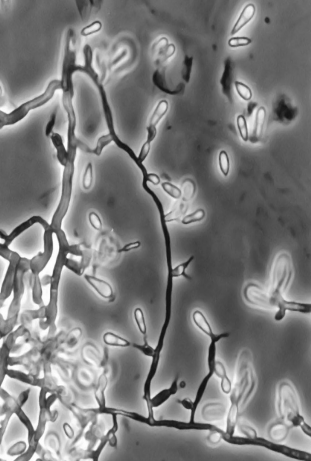
Medmyco. Ochroconis gallopava (UAMH 6551), slide culture from brain abscess of immunocompromised patient, 2017. https://en.wikipedia.org/wiki/Wallemia_sebi#/media/File:Wallemia_sebi.jpg
Dactylaria
Allergens & Potential Toxic Production
- Allergens- Unknown
- Toxic production- Unknown
Outdoor & Indoor Growth
- Natural habitat includes soil and decaying leaves.
Characteristics
- Certain species of Dactylaria have somewhat distinctive spores which could be counted on spore trap samples if the presence of this genus has already been demonstrated
Potential Opportunist & Pathogen
- There have been several reports of opportunistic infections caused by these genera but a true pathogenic role has not been firmly established.
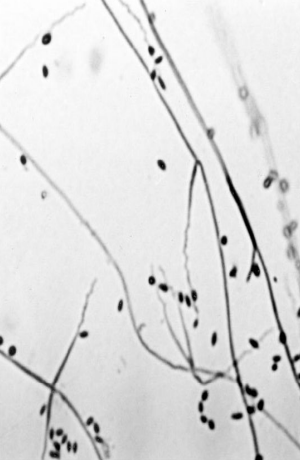
Macharikova, Miroslava. Engyodontium album, a new species of microscopic fungi for Slovakia and its keratinolytic activity. Biologia, Bratislava, 59: 17—18, 2003; ISSN 0006-3088. https://www.researchgate.net/figure/Conidiophores-with-conidiogenous-cells-of-Engyodontium-album-1000_fig1_228773826
Engyodontium
Allergens & Potential Toxic Production
- No information is available regarding toxicity, and allergenicity has not been studied.
Outdoor & Indoor Growth
- Commonly isolated from paper, jute, textiles, and painted walls.
Characteristics
- Spores are not distinctive on spore trap samples and are categorized as "other colorless."
Potential Opportunist & Pathogen
- Health effects of Engyodontium album include reports of keratitis, brain abscess, eczema vesiculosum, and native valve endocarditis.
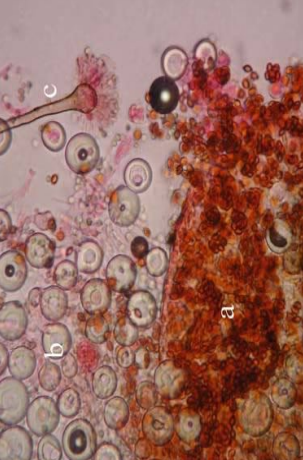
Borman, Andrew. The Importance of Conventional Methods: Microscopy and Culture, 2010. https://www.researchgate.net/figure/Emericella-nidulans-a-cleistotecium-containing-numerous-asci-b-H uelle-cells_fig2_251104898
Emericella
Allergens & Potential Toxic Production
- Health effects, allergenicity, and toxicity of Emericella are closely related to the Aspergillus anamorph and, for the most part, have not been studied apart from that primary phase.
Outdoor & Indoor Growth
- Natural habitat includes soils, seeds, and vegetable matter.
Characteristics
- May be identified on surfaces by tape lifts, tease mounts from bulk samples, and in air on spore trap samples
Potential Opportunist & Pathogen
- Cunninghamella bertholletiae is known as an occasional opportunistic pathogen, mostly after trauma with thorns or splinters.
Epicoccum
Allergens & Potential Toxic Production
- Common Type I allergies (hay fever, asthma).
- Toxic production- Antibiotic substances produced: flavipin, epicorazine A & B, indole-3-acetonitrile.
Outdoor & Indoor Growth
- Found in plant debris, soil. Secondary invader of damaged plant.
- On many different substrates including paper, textiles, and insects.
Characteristics
- Grows well on general fungal media, although sporulation may be strain dependent. Colonies typically have orange reverse pigment.
Potential Opportunist & Pathogen
- No cases of infection have been reported in humans or animals.
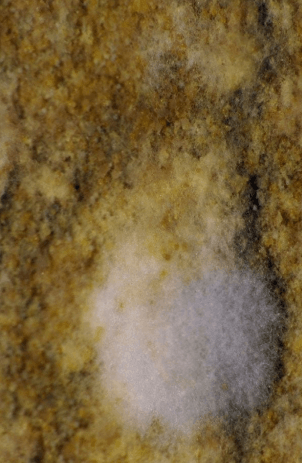
Figure 1. E. chevalieri (Photo source: BlueRidgeKitties, 2011, Flickr) https://www.flickr.com/photos/blueridgekitties/5426811407New Paragraph
Eurotium
Allergens & Potential Toxic Production
- Health effects, allergenicity, and toxicity of Eurotium are closely related to the Aspergillus anamorph and, for the most part, have not been studied apart from that primary phase
Outdoor & Indoor Growth
- Occurs on substrates low in moisture (xerophilic); very common in stored seeds, grows also on textiles, leather, and materials coated with resins and lacquers, such as furniture.
Characteristics
- May be identified on surfaces by tape lifts, tease mounts from bulk samples, and in air on spore trap samples
Potential Opportunist & Pathogen
- Unknown
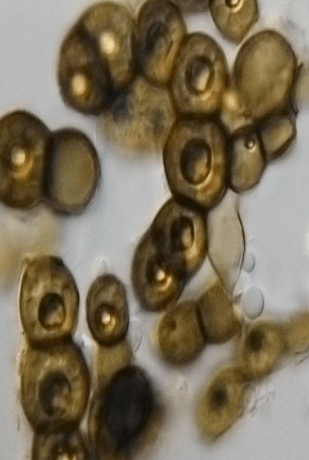
Medmyco. Exophiala (Sarcinomyces) phaeomuriformis in Nomarski Differential Interference Contrast microscopy, 500x OLYMPUS DIGITAL CAMERA, 2015. https://en.wikipedia.org/wiki/Exophiala_phaeomuriformis#/media/File:Exophiala_phaeomuriformis.jpg
Exophiala
Allergens & Potential Toxic Production
- No information is available regarding toxicity. Allergenicity has not been studied.
Outdoor & Indoor Growth
- Widespread distribution in decaying wood, soil, and water (especially surfaces in contact with cool, fresh water).
Characteristics
- On primary isolation, this genus may exhibit a black yeast phase, making identification a little more complex.
Potential Opportunist & Pathogen
- Health effects include occasional mycetomas, chromoblastomycosis, and other subcutaneous lesions.
Fusarium
Allergens & Potential Toxic Production
- Type I allergies- Hay fever and asthma.
- Toxic production- Trichothecenes (type B); T-2 toxin; zearalenone (F-2 toxin), vomitoxin, deoxynivalenol, and fumonisin.
Outdoor & Indoor Growth
- Found in soil, saprophytic or parasitic on plants. Many species are important plant pathogens.
- Occasionally found on a variety of substrates. Fusarium requires very wet conditions.
Characteristics
- Grows well on general fungal media. Sporulation in many species requires specialized media. Colonies are shades of pink to orange to purple.
Potential Opportunist & Pathogen
- Causes keratitis, endophthalmitis, onychomycosis, mycetoma, and disseminated infection in immunocompromised patients; infections in burn victims, and systemic opportunistic infections in severely disabled hosts.

Lechat, Christian. Champignons des Antilles françaises et de Guyane, 2010. https://www.researchgate.net/figure/Gliomastix-fusigera-based-on-culture-obtained-from-single-ascospore-isolate-of-holotype_fig2_44257160
Gliomastix
Allergens & Potential Toxic Production
- No information is available regarding toxicity. Allergenicity has not been well studied.
Outdoor & Indoor Growth
- This genus is cosmopolitan, isolated from soil, plants, and many food products, most especially from milk and milk products.
Characteristics
- Tape lifts and tease mounts from bulk samples may reveal the presence of an arthrospore-forming yeast; isolation on culturable (Andersen) air samples is possible but infrequent.
Potential Opportunist & Pathogen
- Health effects include reports of endocarditis, encephalitis, and osteomyelitis in immunosuppressed hosts. Pulmonary infections have also been described.
Gonatobotrys
Allergens & Potential Toxic Production
- No information is available regarding health effects, or toxicity. Allergenicity has not been studied.
Outdoor & Indoor Growth
- Natural habitat is plant litter.
Characteristics
- Rarely found but may be identified on surfaces by tape lifts, and tease mounts from bulk samples, and in air by culturable (Andersen) samples.
Potential Opportunist & Pathogen
- None available.
Gonatobotryum
Allergens & Potential Toxic Production
- No information is available regarding toxicity. Allergenicity has not been well studied.
Outdoor & Indoor Growth
- Most homes built with lumber have areas of growth of both Ceratocystis and Gonatobotryum on wood framing inside walls.
- Other natural habitats include soil, and rotten wood. Also parasitic on certain other plants.
Characteristics
- May be identified on surfaces by tape lifts, tease mounts from bulk samples, and in air by spore trap samples.
Potential Opportunist & Pathogen
- Not Available
Memnoniella Sp
Allergens & Potential Toxic Production
- Allergens- Not studied.
- Toxic production- Unknown
Outdoor & Indoor Growth
- Found in plant litter, soil and many types of plants and trees.
- Growth on a variety of substrates. Cellulolytic.
Characteristics
- Grows on general fungal media, forming dark gray to black colonies. In Memnoniella the spores do not slime down but are held in long chains.
Potential Opportunist & Pathogen
- Trichothecenes (trichodermol and trichodermin) and griseofulvin. Trichothecene toxicity is due to the ability to bind ribosomal protein. Griseofulvin has been made commercially available as an anti-dermatophyte drug.
Myrothecium
Allergens & Potential Toxic Production
- Allergens- Not studied.
- Toxic production- Trichothecenes (verrucarins and roridins).
Outdoor & Indoor Growth
- Found on grasses, plants and soil; on decaying fruiting bodies of Russula mushrooms.
- Myrothecium has been identified as an indoor contaminant. Occurrence is rare.
Characteristics
- Grows well on general fungal media. Spores have a gray green pigment.
Potential Opportunist & Pathogen
- No reports of human infection.
Nigrospora
Allergens & Potential Toxic Production
- Common Type I allergies (hay fever, asthma).
- Toxic production- None known.
Outdoor & Indoor Growth
- Found on decaying plant material.
- Rarely found growing indoors.
Characteristics
- White, floccose, spreading. Develops black spore clusters with time.
Potential Opportunist & Pathogen
- Very rare report of human infection.
Paecilomyces
Allergens & Potential Toxic Production
- Allergens- Type I allergies (hay fever, asthma). Type III hypersensitivity pneumonitis: Humidifier lung.
- Toxic production- Paecilotoxins, byssochlamic acid, variotin, ferrirubin, viriditoxin, indole-3-acetic acid, fusigen and patulin.
Outdoor & Indoor Growth
- Found in soil and decaying plant material, composting processes, legumes, cottonseeds; some species parasitize insects.
- Has been isolated from jute fibers, paper, PVC, timber (oak wood), optical lenses, leather, photographic paper, cigar tobacco, harvested grapes, bottled fruit, and fruit juice undergoing pasteurization.
Characteristics
- Grows well on general fungal media. Some species produce distinctive pigments such as ocher and lilac. Paecilomyces does not produce blue or green colonies.
Potential Opportunist & Pathogen
- Human disease is relatively rare. Mycotic keratitis in conjunction with corneal implants, nosocomial infections, endocarditis, infections in immunocompromised patients are reported.
Penicillium
Allergens & Potential Toxic Production
- Type I allergies- Hay fever and asthma.
- Type III- Hypersensitivity pneumonitis: Cheese washer’s lung, Woodman’s lung, Moldy wall hypersensitivity.
- Toxic production- Various toxins by different species: penicillic acid, peptide nephrotoxin, viomellein, xanthomegin, xanthocillin X, mycophenolic acid, roquefortine C & D, citrinin, penicillin, cyclopiazonic acid, isofumigaclavine A, penitrem A, decumbin, patulin citreoviridin, griseofulvin, verruculogen, ochratoxin, chrysogine, and meleagrin.
Outdoor & Indoor Growth
- Found in soil, decaying plant debris, compost piles, fruit rot.
- Widespread. Commonly found in house dust, Grows in water damaged buildings on wallpaper, wallpaper glue, decaying fabrics, moist chipboards, and behind paint. Also found in blue rot of apples, dried foodstuffs, cheeses, fresh herbs, spices, dry cereals, buts, onions and oranges.
Characteristics
- Grows readily on general fungal media. Colonies are usually shades of blue and green.
Potential Opportunist & Pathogen
- One species of Penicillium species, P. marneffei, is a cause of human infection. It has not yet been found in the United States.
Periconia
Allergens & Potential Toxic Production
- Allergens- Not studied.
- Toxic production- Not known.
Outdoor & Indoor Growth
- Found in soil, blackened and dead herbaceous stems and leaf spots, grasses, rushes and sedges. Almost always associated with other fungi.
- Rarely found growing indoors.
Characteristics
- Colonial morphology is similar to Cladosporium.
Potential Opportunist & Pathogen
- Rare case of mycotic keratitis reported.
Pithomyces
Allergens & Potential Toxic Production
- Allergens- Not studied.
- Toxic production- Sporidesmin.
Outdoor & Indoor Growth
- Commonly found on leaves of more than 50 different plants, especially leaf fodders. Soil, grasses.
- Rarely found growing indoors. Can grow on paper.
Characteristics
- Grows readily on general fungal media; sporulation may be slow, and may require a “light/dark cycle.” Colonies are shades of tan to brown.
Potential Opportunist & Pathogen
- No reports of human infection.
Phoma
Allergens & Potential Toxic Production
- Allergens- Type I allergies (hay fever, asthma).
- Toxic production- Unknown
Outdoor & Indoor Growth
- Found in plant material, soil and as a fruit parasite.
- Frequently found on walls, ceiling tiles, on the reverse side of linoleum. Also found on cement, paint, paper, wood, wool, and foods such as rice and butter. May have little effect on the indoor air because the spores are not readily disseminated by air currents.
Characteristics
- Grows on general fungal media. Very small spores formed in pycnidia.
Potential Opportunist & Pathogen
- Mycotic keratitis, rare skin infection, and a few cases of subcutaneous phaeohyphomycosis reported.
Rhinocladiella Sp
Allergens & Potential Toxic Production
- Allergens- Not studied.
- Toxic production- Unknown
Outdoor & Indoor Growth
- Found in soil, herbaceous substrates and decaying wood.
- Occasionally found on variety of substrates. One species is called the cellar fungus, most commonly found on brickwood and adjacent timber in wine cellars.
Characteristics
- Very small, glow growing colonies.
Potential Opportunist & Pathogen
- Three cases of subcutaneous infection have been reported.
Rhizopus
Allergens & Potential Toxic Production
- Allergens- Type I allergies (hay fever, asthma). Type III hypersensitivity pneumonitis: Paprika splitter’s lung, Wood trimmer’s lung.
- Toxic production- Unknown
Outdoor & Indoor Growth
- Found in forest and cultivated soils, decaying fruits and vegetables, animal dung and compost; a parasitic plant pathogen on potato, cotton and various fruits.
- Found on variety of substrates. Common on spoiling food; less common on indoor environmental surfaces.
Characteristics
- Grows on general fungal media.
Potential Opportunist & Pathogen
- Rhizopus is the principle cause of zygomycosis, which occurs primarily in patients suffering from diabetic ketoacidosis (rhinocerebral disease), malnutrition, severe burns, or who are immunocompromised.
Rusts
Allergens & Potential Toxic Production
- Allergens- Type I allergies (hay fever, asthma).
- Toxic production- Unknown
Outdoor & Indoor Growth
- Found in grasses, flowers, trees and other living plant materials.
- Rusts do not grow indoors unless their host plants are present. They are parasitic plant pathogens and need a living host for growth.
Characteristics
- Grows on general fungal media. Very small spores formed in pycnidia.
Potential Opportunist & Pathogen
- Rusts do not grow on ordinary laboratory media. They require a living host plant for growth.
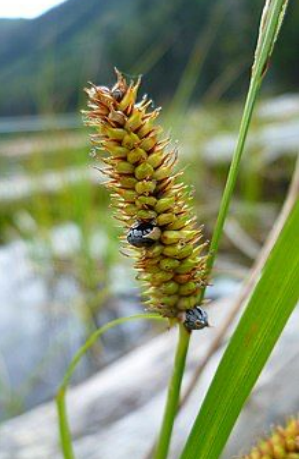
Tuason, Thayne. Carex utriculata infected with smut at Myrtle Lake, Chelan County Washington, 2013. https://en.wikipedia.org/wiki/Smut_(fungus)#/media/File:Carex_utriculata_1.jpg
Smuts
Allergens & Potential Toxic Production
- Allergens- Type I allergies (hay fever, asthma).
- Toxic production- Unknown
Outdoor & Indoor Growth
- Found on cereal crops, grasses, weeds, other fungi, and on other flowering plants.
- Smuts do not usually grow indoors. They are parasitic plant pathogens that require a living host for the completion of their life cycle.
Characteristics
- The airborne phase (teliospores) of smut requires a living host for growth and will not develop on laboratory media. The yeast phase (basidiospores) is saprophytic and will grow on general fungal media.
Potential Opportunist & Pathogen
- No reports of human infection by the plant parasitic forms.
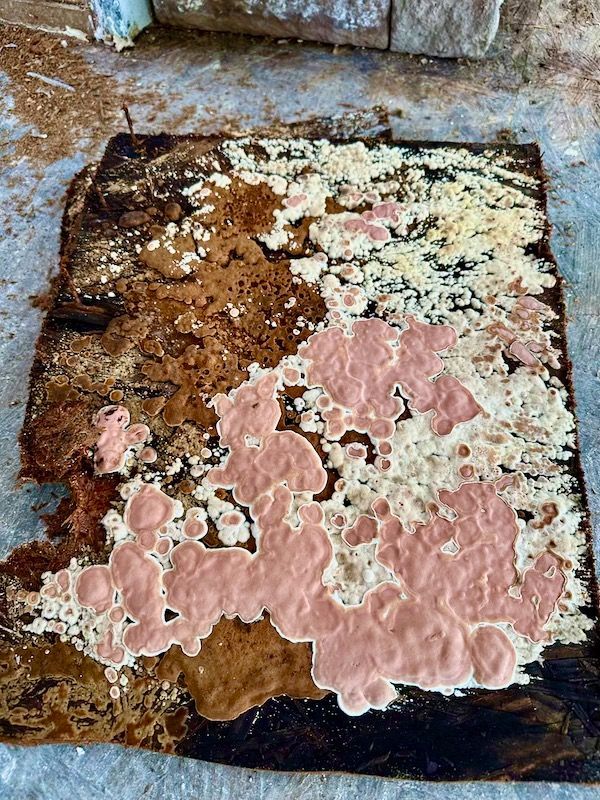
Sporobolomyces
Allergens & Potential Toxic Production
- Know allergen, Type I and Type III allergies.
- Toxic production- Unknown
Outdoor & Indoor Growth
- Found in tree leaves, soil, rotting fruit, other plant materials. Associated with lesions cause by other plant parasites.
- Grows on variety of substrates. Requires very wet conditions.
Characteristics
- Grows on general fungal media. Colonies are commonly in shades of peach, pink and salmon; characteristics satellite colonies are produced around the main colony as a result of forcibly released ballistospores.
Potential Opportunist & Pathogen
- Implicated as a cause of dermatitis. Other disease associations are unclear.
Stachybotrys
Allergens & Potential Toxic Production
- Type I allergies- Not well studied.
- Toxic production- Macrocyclic trichothecenes: verrucarin J, roridin E, satratoxin F, G & H, sporidesmin G, trichoverrol; cyclosporins, stachybotryolactone. Stachybotrys mycotoxicosis: human toxicosis has been described; may be characterized by dermatitis, cough, rhinitis, itching or burning sensation in mouth, throat, nasal passages and eyes.
Outdoor & Indoor Growth
- Found in soil, decaying plant substrates, decomposing cellulose (hay, straw), leaf litter, and seeds. Growth enhanced by manure.
- Commonly found indoors on wet materials containing cellulose, such as wallboard, jute, wicker, straw baskets, and other paper materials.
Characteristics
- Grows well on general fungal media. Stachybotrys is slow growing as compared to Penicillium and other common mold genera, and may not compete well in the presence of other fungi. However, when water availability is high for prolonged periods on environmental material, Stachybotrys may gradually become the predominating mold, especially on cellulose containing materials.
Potential Opportunist & Pathogen
- No reports of human infection.
Stemphylium
Allergens & Potential Toxic Production
- Know allergen. Shares allergens with Alternia. Type I allergies (hay fever, asthma).
- Toxic production- Unknown
Outdoor & Indoor Growth
- Found in soil, wood, decaying vegetation. Some species found on leaves are plant pathogens.
- Grows indoors is rare.
Characteristics
- Grows on general fungal lab media; sporulation may be slow to absent. “Light/dark cycling” may induce sporulation.
.
Potential Opportunist & Pathogen
- A rare report of phaeohyphomycotic sinusitis (identification questionable).
Torula
Allergens & Potential Toxic Production
- Allergens- Type I allergies (hay fever, asthma).
- Toxic production- Not known.
Outdoor & Indoor Growth
- Commonly found in soil, dead herbaceous stems, wood, grasses, sugar beet root, groundnuts and oats.
- Found indoors on cellulose containing materials such as jute, old sacking, wicker, straw baskets, wood and paper.
Characteristics
- Grows vegetatively on general fungal media but usually requires specialized media for sporulation.
Potential Opportunist & Pathogen
- No reports of human infection.
Trichoderma
Allergens & Potential Toxic Production
- Type I allergies- Hay fever and asthma.
- Type III allergies- Hypersensitivity pneumonitis.
- Toxic production- Trichothecene and cyclic peptides; gliotoxin, isocyanides, T-2 toxin, trichodermin. Trichoderma may causes a mycotoxicosis similar to that caused by stachybotrys chartarum.
Outdoor & Indoor Growth
- Found in soil, decaying wood, grains, citrus fruit, tomatoes, sweet potatoes, paper, textiles, damp wood.
- Found on paper, tapestry, wood, in kitchens on the outer surface of unglazed ceramics and on a variety of other substrates. Strongly cellulolytic.
Characteristics
- Grows well on general fungal media; spreads in a white floccose mat, developing blue-green to yellow-green tufts of spores.
.
Potential Opportunist & Pathogen
- Human infections include a pulmonary cavity, peritonitis in a dialysis patient, and a perihepatic infection in a liver transplant patient. Considered an emerging opportunist in immunocompromised persons.
Ulocladium
Allergens & Potential Toxic Production
- Type I allergies- Hay fever and asthma. Ulocladium cross-reacts with Alternaria, adding to the allergenic burden of Alternaria-sensitive patients.
- Toxic production- Not known.
Outdoor & Indoor Growth
- Found in soil, dung, paint, grasses, fibers, wood, decaying plant material, paper and textiles.
- Widespread. Found on gypsum board, paper, paint, tapestries, jute, other straw materials. Ulocladium has a high water requirement.
Characteristics
- Grows well on general fungal media. Colonies are black brown to rusty brown, granular to velvety.
Potential Opportunist & Pathogen
- Rare subcutaneous tissue infection.
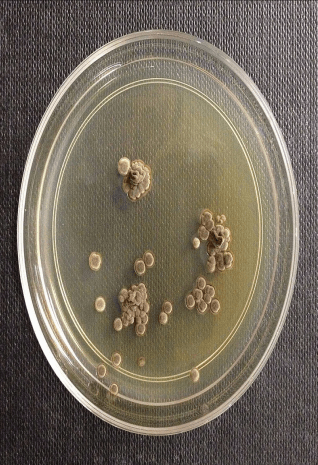
Hainguyen1984. A culture of Wallemia sebi on a Petri dish, 2013. https://en.wikipedia.org/wiki/Wallemia_sebi#/media/File:Wallemia_sebi.jpg
Wallemia Sebi
Allergens & Potential Toxic Production
- Known allergens. Type I allergies (hay fever, asthma).
- Toxic production- Walleminol, tryptophol and UCA 1064-beta.
Outdoor & Indoor Growth
- Found in soil, good stuffs, hay, textiles. Grows on salted fish.
- Wallemia grows on relatively dry surfaces; found on wood in crawl spaces. Common in mattress dust; may colonize human skin scales.
Characteristics
- Poor growth on general fungal media. Grows on specialized fungal media with high osmotic pressure.
Potential Opportunist & Pathogen
- Rare human abscess reported.
What Our Clients Say
Now Offering Financing!
Break Your Project Cost Into Manageable, Monthly Payments
Central Florida
South Florida
North Florida
©2023 All Rights Reserved Mold Masters Powered by OneLocal | Privacy Policy

